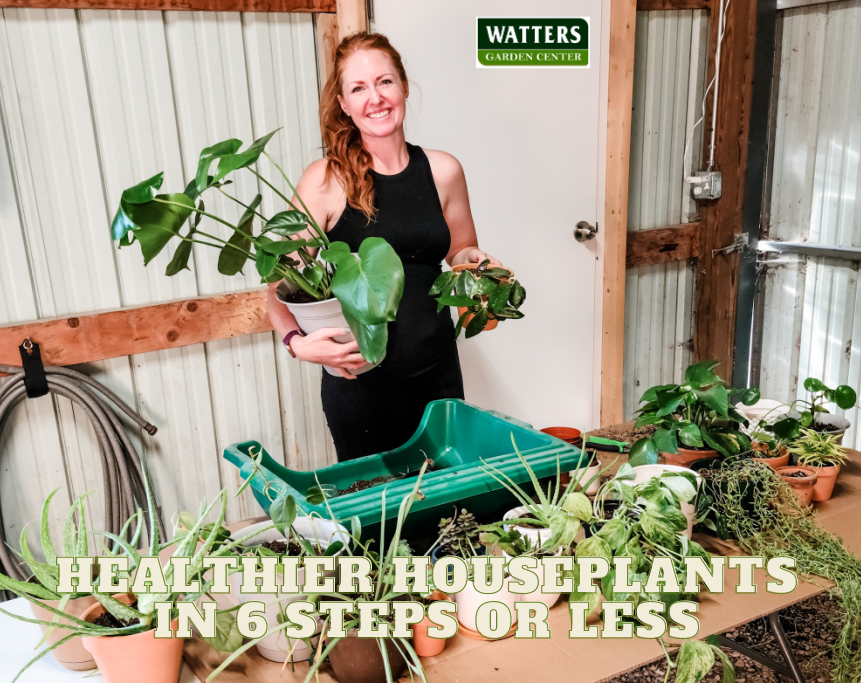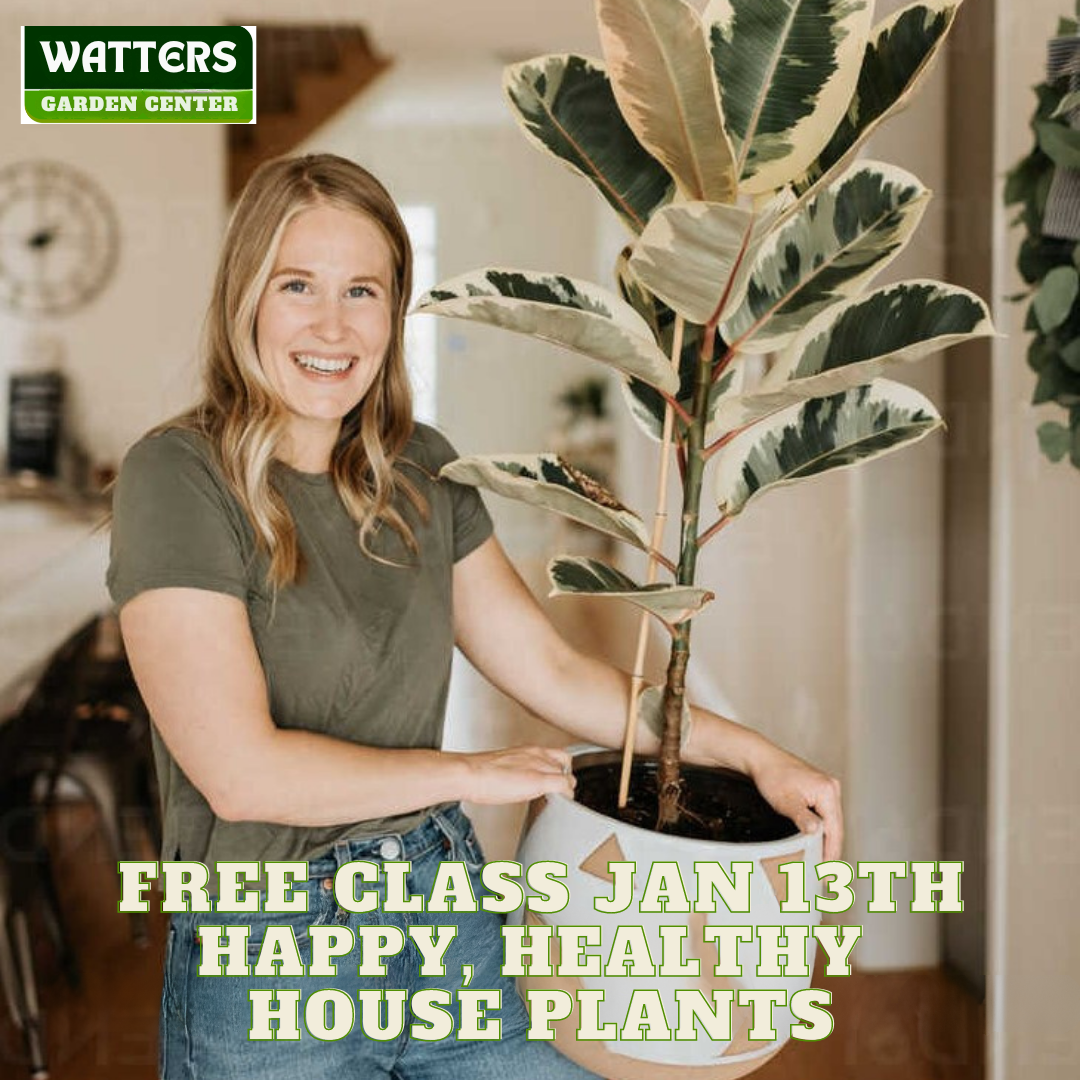by Ken Lain, the mountain gardener


Readers Digest Summary Version
Pot-Bound Blues? Roots bulging from the pot and growing? Time to repot your houseplant for happier roots and greener days! Gently unseat your plant, loosen its rooty crown, and choose a pot with drainage holes one size larger. Ceramic containers are better than plastic for breathability.
Planting Party: Nestle your plant in new Watters Potting Soil without burying the plant’s crown. Water thoroughly until water seeps from the container’s drainage hole. Happy roots, happy houseplant!
Fertilize Finesse: Hold off on fertilizer for 6 weeks – Watters Potting Soil has added organic houseplant food. Let your plants focus on settling into their new digs.
A Bright Spot, please: Indirect light is your plant’s BFF. Find them a happy corner and watch it thrive in its roomier conditions.
Bonus Bloom: Some tropical friends like a snug fit. Underpot slightly to encourage blooms and lush foliage, not just rooting marathons.
When Outdoor plants need more room, they stretch their roots into the surrounding garden. Houseplants are limited to the soil in their contains. Repotting containing plants is crucial for healthy houseplants. The best time of year to repot is late winter to early spring, before the new flush of growth. Plants give signals when they need a larger home.
The plant is root-bound or pot-bound
Roots protrude from the bottom of the pot
The plant stops growing or becomes limp
When Plants are Too Big to Transplant
Some plants are simply too large to repot. Try top dressing the soil by carefully removing the top few inches of soil and replacing it with new Watters Potting Soil.
Steps for transplanting a plant into a larger container
Prepare the Plant for Extraction – Lightly water the plant, let it dry for an hour, and then gently remove it from the pot. You can do this by turning the pot over and gently pulling the pot up and away from the root ball. Yank a plant out of its pot by the stem is not a good idea.
Care for the Roots – It is okay to gently loosen the root ball with a finger or fork, but be careful not to cause any root damage. Cut away dead or rotted roots. If you plan on repotting the plant into the same size pot, you should root prune your plant.
Prepare the New Pot – Ideally, repot a plant one size up. Moving up in size too quickly can slow growth. Ceramic containers breathe better and are healthier for houseplants than plastic. Add Watters Potting Soil directly to the pot. You do not need to add pebbles or other drainage media to the bottom of the pot. This reduces the growing area for the roots and hastens the decline of the potting soil by paradoxically reducing aeration.
Plant – Gently set your new plant in its new ceramic container and backfill it with Potting Soil. Many tropical plants like to be slightly underpotted. Unless you must repot it because the soil is exhausted or the plant is suffering, there is no reason to do it early. An over-potted plant will focus on root growth at the expense of new foliage and flowers.
Finally, some plants, such as bromeliads, rarely need to be repotted. If a bromeliad sends out pups or mini-plants, cut these off near the mother plant’s base and pot them separately in Watters Potting Soil. One of the leading causes of plant collapse is planting too deep. Ensure the newly potted plant is not planted deeper than in the original pot. As you fill in, press the soil down firmly and gently tap the pot to settle all the dirt.
Water – thoroughly, and if necessary, add a little more soil to top things off. You should water until liquid seeps from the drainage holes at the bottom of the pot.
When to Fertilize – When it comes to fertilizing newly repotted plants,
Watters Potting Soil already has a 5-5-5 organic plant food ideal for new transplants. You should not fertilize freshly repotted plants for six weeks.
Spring Garden Classes begin in January.

The season ahead is exciting. We have a new series of Garden Classes free to fans of this column. Here’s the roster of exciting classes starting in January. We go deep into growing better. Check out this spring’s entire class selection offered every Saturday @ 9:30 am
January 13 – Happy Healthy Houseplants with Professional Style
January 20 – Top Local Landscapes with Flare
January 27 – Why January is the Month to Plant Wildflowers
Until next week, I’ll be helping local gardeners grow better houseplants here at Watters Garden Center.


